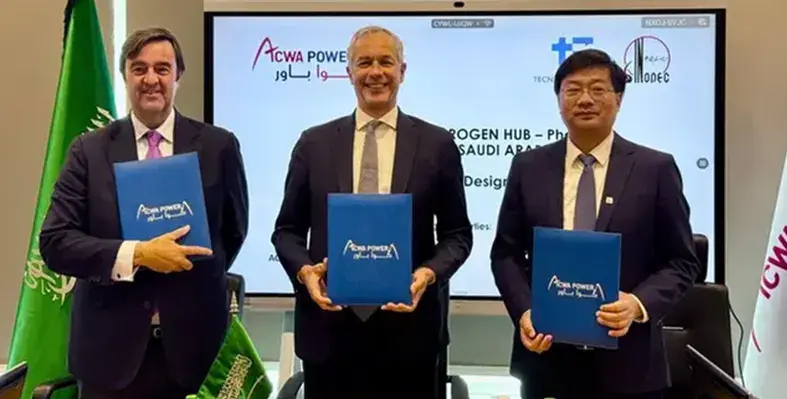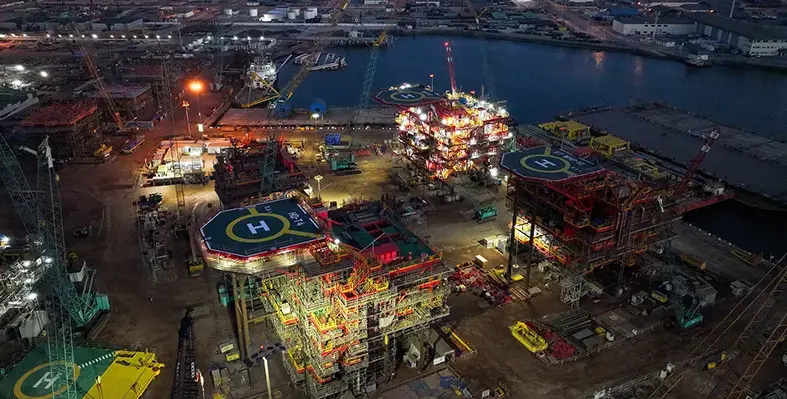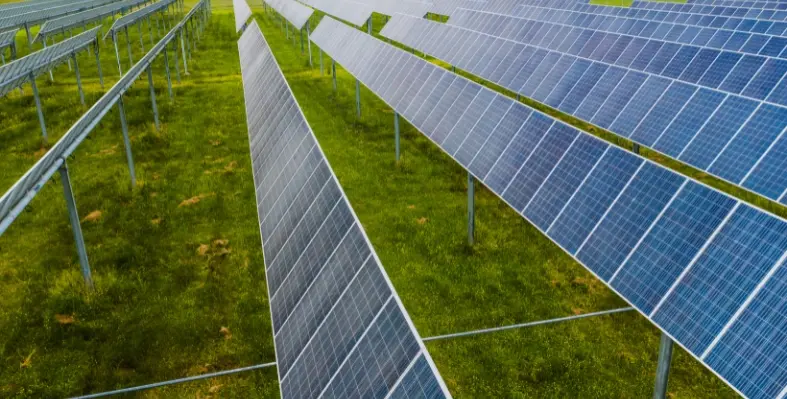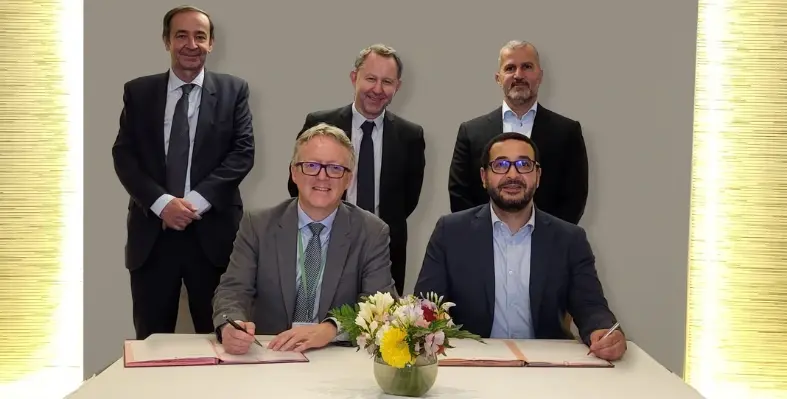ACWA Power, a global leader in energy transition and the world’s largest private water desalination company, has awarded a convertible front-end engineering design (FEED) contract for its landmark Yanbu Green Hydrogen Project in Saudi Arabia.
The contract has been secured by a consortium comprising Spain’s Técnicas Reunidas and Sinopec Guangzhou Engineering, one of China’s major energy and chemical engineering firms.
Under the agreement, the consortium will deliver the FEED for a facility designed to produce 400,000 tonnes of green hydrogen annually.
This hydrogen will be converted into green ammonia using several ammonia synthesis loops to enable large-scale export and decarbonisation.
Spanning 10 months, the FEED phase will lay the foundation for an engineering, procurement, and construction (EPC) proposal to follow.
The plant is scheduled to be operational by 2030. Técnicas Reunidas has been involved since the project’s pre-FEED stage, while Sinopec’s role builds on its 2024 memorandum of understanding with ACWA Power.
International exports
Located in Yanbu Industrial City, the project is expected to play a key role in decarbonising hard-to-abate sectors. It will harness 5 GW of wind and 5 GW of solar energy, supported by a 400 km transmission line and up to 4.4 GW of electrolysers.
The resulting green hydrogen will be converted into approximately 2.5 million tonnes of green ammonia annually, targeting international markets.
This large-scale initiative supports Saudi Arabia’s ambitions to become a global green hydrogen hub and underlines ACWA Power’s growing role in advancing low-carbon energy solutions.
Marco Arcelli, CEO, ACWA Power, said, “The rapid pace of development on the Yanbu Green Hydrogen Project is a clear demonstration of our commitment to supporting the Kingdom’s long-term energy security while also taking a leadership role in the global transition to sustainable energy. By developing and exporting green ammonia, we aim to support international markets in their decarbonisation efforts and pave the way for a cleaner, more sustainable world.”
Eduardo San Miguel, CEO, Tecnicas Reunidas, said, "This new contract represents a highly significant milestone for Técnicas Reunidas. It is a strategic international energy project that strengthens the cooperation between Saudi Arabia and Europe, in collaboration with our client ACWA Power. The project reaffirms our strong commitment to the Saudi market and marks a major step forward in our strategy in energy transition and decarbonisation and it also reinforces our successful partnership with Sinopec. We are deeply honoured to have been selected by ACWA Power to undertake this landmark project."
Han Weiguo, president, Sinopec Guangzhou Engineering, said, “This project represents a significant leap forward in the global green energy sector and a pivotal milestone in green energy advancement. It will drive global energy transformation and lead the industry toward a sustainable green future. SINOPEC Guangzhou Engineering will collaborate closely with the client ACWA Power and our partner TR to facilitate the implementation of this mega project and make a significant contribution to global green energy development.”
Also read: AVEVA and Protium aim to accelerate green hydrogen innovation











